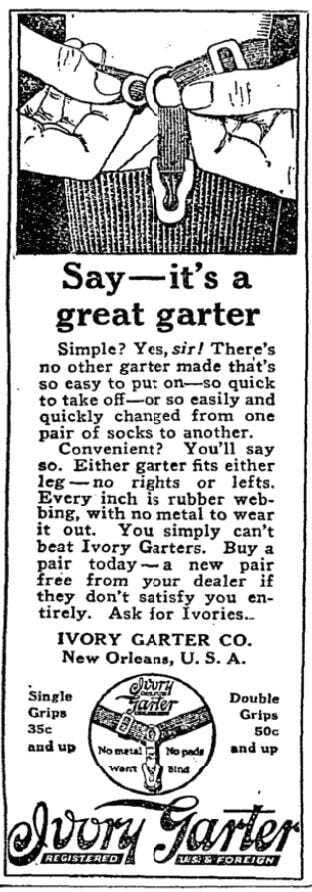- Strange Times
- Posts
- Strange Times 185: This Donkey Parade
Strange Times 185: This Donkey Parade

Today we have tales of animals driven to madness, theft, and union busting. Protest the Zee on…
July 4, 1921
100,000 “anti-drys” mark the Fourth of July by marching up Fifth Avenue to protest Prohibition, which they consider “a violation of their personal liberty.”
Rumors circulate that American socialist Eugene V. Debs, who last year ran for president from his prison cell, is on the verge of being freed.
“Feminine parlor Bolshevists” are accused of financing the production of radical films in Philadelphia.
One million New Yorkers flee to the city’s beaches on the hottest day of the year, crowding them so badly that three bathers drown.
The New York Times celebrates the Fourth by reprinting the Declaration of Independence in full.
The Weather: Partly cloudy today and Tuesday; little change in temperature; gentle to moderate northwesterly winds.

Content warning for, well, everything you just read in the headline. Our word of the day, tonneau, in this case means a roadster’s uncovered back seat. The Pasteur treatment is a rabies vaccine invented by Louis Pasteur in 1885, which is still in use all over the world today.
A pet Angora cat, believed to have been suddenly maddened with rabies, made a savage attack on its mistress as she was motoring through Bayside, Queens, yesterday morning and had to be strangled before its teeth relaxed their hold. The victim, Mrs. Marjorie Forbes of 400 West 154th Street, after emergency treatment by a local physician, hurried back to Manhattan to undergo Pasteur treatment.
Mrs. Forbes was in the tonneau of a car driven by her husband, Howard C. Forbes, real estate dealer of 66 Broadway. The car had just turned from Belle Avenue into Rockyhill Road and was opposite the Belleclaire Country Club when Mr. Forbes heard an agonized scream from his wife, followed by the sounds of a struggle. Mystified, he swerved to the roadside, jamming on the emergency brake and not daring to turn around until he was out of the roadway along which cars were speeding in both directions.
To his horror he found that the cat, a big female, had sunk its teeth deep into the middle finger of his wife’s right hand, and was clinging fast, despite her efforts to fight it off. the cat was powerful, and even after Forbes himself seized it, its clenched jaws maintained their hold on the lacerated finger. Mrs. Forbes, badly frightened, was still fighting bravely until her husband told her to take her other hand away. Then he closed his own hands around the cat’s neck and squeezed until the jaws relaxed. The cat dropped to the tonneau floor, gasped a time or two, and was dead.
Passing motorists who had heard the screams hurried to a police booth four blocks away and sent a policeman, who arrived with drawn weapon, ready to kill the cat. Satisfied that the animal already was dead, the policeman brought Dr. William Dickie from his office near by. Dr. Dickie found the finger badly torn. He cauterized the wound, bandaged the finger and advised Mrs. Forbes to take the Pasteur treatment at once.
Forbes hurried his wife back to New York, taking the body of the cat with him that it might be examined in a laboratory to determine whether it was mad.

I’ve clearly got animals on the brain because I had to read that first sentence twice to realize that Mrs. Helen Wenning is a person from Alsace, not an Alsatian dog.
ROME, June 11.—Mrs. Helen Wenning, an Alsatian, living in a fashionable hotel here, recently reported to the police that she had missed a pearl necklace from her jewel case. Everything was done to find out what had become of the gems. Detectives interviewed hotel employees, but no clue could be found.
A day or two later, one of the men searching about the nooks and corners of Mrs. Wenning’s room found a piece of the necklace near a small hole in the floor. A thorough investigation was then made, and the detectives concluded that rats had stolen her string of pearls.

This story is fully baffling. It spends a lot of time focusing on the connection to the Tafts, which aren’t interesting, and no time explaining why the union objected to the donkey’s sign.
CINCINNATI, July 3.—As a result of a suit filed in the Superior Court here by the Cincinnati Zoological Park Association through Robert A. Taft, son of William H. Taft, against the Waiters’ Alliance, Local 72, and William Frische, W. Maxman, Dan Ruehlmann, Grady Batcheler and Don Harding, officers and members of the union, Superior Judge Smith Hickenlooper granted a temporary injunction against the union.
The suit grew out of the difference between the union waiters and the Zoo management, of which Charles P. Taft, brother of W.H. Taft, is President. The management sought to prevent picketing and the carrying of a banner in front of the “Zoo.”
Judge Hickenlooper’s injunction is against any acts of violence or intimidation, and he also requires the waiters to change the word on their banners from “Zee,1 which is controlled by Mrs. Chas. P. Taft, and associates other multi-millionaire society women, unfair to organized labor,” to “Zoo employs non-union waiters.” Banner carrying within 30 feet of the Zoo entrance was not enjoined.
William Thorndyke, counsel for the union, complained that the Zoo management was parading a donkey, led by a negro boy, behind the banner carrier, and that the donkey bore a placard objectionable to the union men. Judge Hickenlooper ordered this donkey parade discontinued, and the management agreed to do so.


